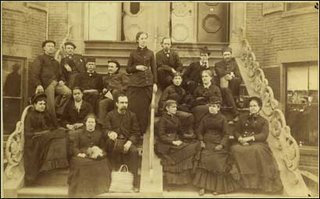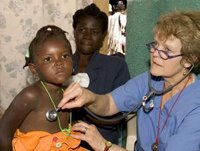SEATTLE--(BUSINESS WIRE)--Aug. 7, 2006--The Center for Women Policy Studies and the Women's Bioethics Project (WBP) today announced the formation of the first-ever State Legislative Advisory Board on Women and Bioethics. The bipartisan 15-member board is made up of progressive state legislative leaders from around the country. The first meeting of the newly formed board will be held in conjunction with the annual meeting of the National Conference of State Legislatures (NCSL) on Monday, Aug. 14, 2006, 3-5 p.m. at the Gaylord Opryland Resort & Convention Center in Nashville, Tenn. The meeting is open to the public.
The advisory board meeting will feature a presentation by Dr. Robin N. Fiore, who is the Adelaide R. Snyder Professor of Ethics at Florida Atlantic University. Dr. Fiore's presentation will cover a full range of bioethics issues ranging from end-of-life issues and the effect of the Terry Schiavo case to stem cell research and its impact on women's reproductive rights and health. Following the presentation, the legislative leaders attending the meeting will assist the Center for Women Policy Studies and the WBP in planning a Bioethics Seminar for Women State Legislative Leaders, which will take place in 2007.
According to Leslie R. Wolfe, Ph.D., president of the Center for Women Policy Studies, "This meeting will provide a forum for state legislators to discuss the challenges they face in understanding the ethical implications of legislative issues pending at the state level." Wolfe, whose organization works with legislators on a range of key policy issues, noted that, "State legislators need support to preserve women's decision-making rights on all these complex issues."
"We are delighted to have such an impressive group of state legislators to advise us. We are focusing on the state legislative level because that's where many of these complicated bioethical issues tend to emerge," said Kathryn M. Hinsch, founder of the WBP. "We firmly believe that women's voices need to be heard, because women are uniquely affected by issues in biotechnology and healthcare. By providing legislative leaders with the support they need to champion these issues, we can help ensure that the entire spectrum of human experience is represented on these critical issues."
The founding members of the state legislative bioethics advisory board are listed here:
-- State Senate Majority Leader Lisa Brown, Wash.
-- State Senator Patrice Arent, Utah
-- State Senator Joan Bray, Mo.
-- State Senator Pam Brown, Neb.
-- State Senator Jennie Forehand, Md.
-- State Senator Karen Fraser, Wash.
-- State Senator Nia Gill, N.J.
-- State Senator Toni Harp, Conn.
-- State Senator Maggie Tinsman, Iowa
-- Former State Senate Majority Leader Lana Oleen, Kan.
-- State Representative Kathy Hawken, N.D.
-- State Representative Linda Lopez, Ariz.
-- State Representative James Roebuck, Pa.
-- State Delegate Jean Cryor, Md.
-- State Secretary of Administration Viola Baskerville, Va.
About the Center for Women Policy Studies
The Center for Women Policy Studies is a Washington, D.C.-based think tank and was founded in 1972. It works with policy makers on such women's human rights issues as reproductive rights and health, international trafficking of women and girls, and the alleviation of women's poverty. (http://www.centerwomenpolicy.org)
About the Women's Bioethics Project
The Women's Bioethics Project (WBP) is an independent, nonpartisan, public-policy think tank based in Seattle. WBP is dedicated to ensuring that women's voices, health concerns and unique life experiences are represented in discussions and decisions about ethical issues in healthcare and biotechnology. (http://www.womensbioethics.org)






















